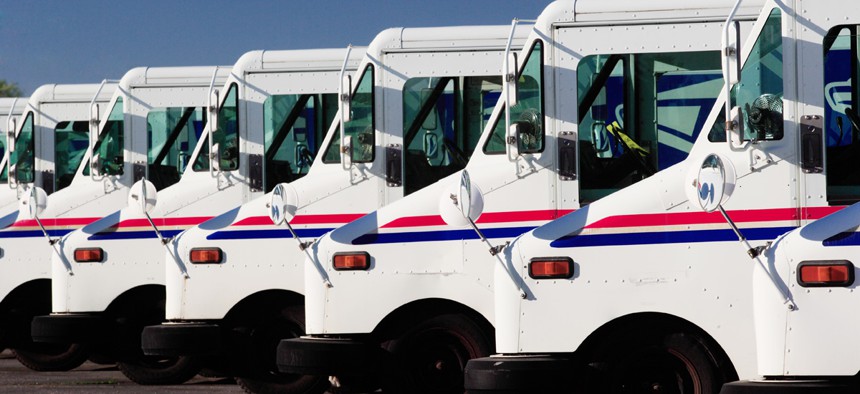Postal Service's Futuristic Vision for the Internet of Things

B Brown/Shutterstock.com
The "Internet of Postal Things" paints a picture of post office systems that auto-fill paperwork for customers as they walk in, delivery vehicles that monitor themselves for maintenance, and sensors that notify package recipients upon delivery.
The U.S. Postal Service is betting a new device will soon enter hi-tech homes, alongside the self-adjusting thermostats, text-enabled washing machines, and fridges notifying owners when groceries run out: the smart mailbox.
It's the future of mail delivery, according to USPS’ Office of the Inspector General: a mailbox, equipped with tiny sensors that can collect data on mail delivery and pick up time, or outside temperature. The owners might control the box's internal temperature and locking mechanism through a smartphone app.
The smart mailbox is just one element of the Postal Service's larger vision for the Internet of Things, a term for a connected network of devices and sensors. In a report about that vision -- dubbed the "Internet of Postal Things" -- the Inspector General's Office, in collaboration with IBM, paints a picture of post office systems that auto-fill paperwork for customers as they walk in, delivery vehicles that monitor themselves for maintenance, and sensors that notify package recipients upon delivery, among other scenarios.
The IG's office recommended the Postal Service "start experimenting with Internet of Things technologies" to modernize its business, "as well as develop new business models to stay relevant in the digital age.”
A more advanced technological infrastructure could prepare the agency for same-day delivery and real-time rerouting for packages, options which "have the potential to grow in importance as consumers continue to buy more items online," the report said.
For instance, sensors in a smart mailbox could scan a barcode or read an RFID tag on a letter, which could confirm delivery and replace the hand scan and delivery signature process, the report said. If the mailbox were temperature controlled, employees could deliver groceries or temperature-sensitive medicine.
These new mailboxes could also make the agency money. "If 5 percent of the 117 U.S. million households rented such a box for $3 a month, the product would generate $210 million a year in revenue," the report said.
Postal Service vehicles could use sensors for driving routing systems, modeled after the DHL's SmartTruck program, which can recalculate routes based on real-time events such as traffic, weather, or new pick-up requests. Vehicle sensors could also weigh cargo to make sure the truck is fully packed.
In the 2012 fiscal year, the Postal Service spent $926 million on fuel for more than 15,000 highway routes, some of which are coast-to-coast -- sensors could help manage those contracts better, the report said.
In-vehicle sensors could also "incentivize contract drivers as well as its own carriers to adopt fuel-efficient behavior."
The sensors could additionally collect large volumes of data on routes, helping the agency identify operational inefficiencies. The Postal Service has about 200,000 vehicles traveling more than 1.2 billion miles annually, often the same route six days a week -- and plans to acquire about 10,000 vehicles over the next two years, the report said.
The IG also suggested post offices themselves get a tech upgrade. More efficient lighting or air conditioning systems might turn off when the office is empty. During business hours, beacon technology could detect when a customer enters the post office, send him or her a push notification through a smartphone app, and direct them to the right counter.
Customers could also use an app to pre-fill paperwork, such as customs forms, which could then be displayed on a clerk's monitor. They may also use a smartphone app to pay for postage.
According to IBM's calculations, these and other improvements to post office buildings could save the agency about $78 million a year, about 15 percent of its total energy bill.
This whole system would require a new software platform that could "foster innovation similar to what Apple and Android have done," the IG report noted. That platform could serve as a hub for other businesses that work with the Postal Service, for instance.
But a large-scale technological upgrade might also require new personnel, "with expertise in systems management and integration, analytics and security," the report said. The Postal Service will also need to retrain existing employees to use a new system.
And there are security challenges, the report warned.
"Anything connected to the Internet is a potential entry point for an unauthorized individual to slip into the system," the report said. "This is of particular concern with [the Internet of Postal Things] due to the sheer number of endpoints that need to be protected."
(Image via B Brown/ Shutterstock.com)
NEXT STORY: A 'Yelp for Government' is Coming





